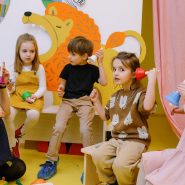Autism is most often associated with childhood, but many people reach adulthood without ever realizing they are on the spectrum.
For some, a late diagnosis becomes the key that explains lifelong patterns—why social interactions felt exhausting, routines mattered so much, or sensory overloads were overwhelming. Understanding autism in adults opens doors to self-acceptance, meaningful support, and community connection.
Recognizing Autism in Adulthood
Adults who receive an autism diagnosis later in life often describe a lifelong sense of difference. They may have developed strong coping mechanisms that helped them “mask” their traits in social or work settings, but masking can be exhausting. Common indicators include:
- Difficulty interpreting social cues or maintaining eye contact
- Intense focus on specific interests
- Sensitivity to noise, texture, or light
- A need for structure and predictability
- Challenges with small talk or unspoken social rules
For many adults, recognizing these patterns isn’t about labeling themselves—it’s about understanding their wiring and finding tools that make daily life easier.
The Path to a Late Diagnosis
Some adults discover their autism through research after a child or partner is diagnosed. Others find clarity after years of being misdiagnosed with anxiety, depression, or ADHD. Because autism presents differently across individuals—and is often underdiagnosed in women—the journey to recognition can take years.
Receiving a diagnosis, whether formal or self-identified, often brings a mixture of relief and grief. Relief in finally understanding oneself, and grief for the years spent struggling without support. Both emotions are valid, and both can coexist.
Finding Support and Community
The right support can make a profound difference. Many adults begin by seeking therapy with clinicians experienced in neurodiversity-affirming care. Support groups, both in-person and online, provide spaces to share experiences without judgment.
Self-advocacy communities emphasize that autism is a lifelong neurotype, not a disorder to be cured. Embracing neurodiversity means recognizing that differences in thinking, communication, and perception are part of human variety.
Workplace and Relationship Challenges
Workplaces can be difficult environments for autistic adults due to sensory stress, ambiguous communication, and unwritten social norms. Reasonable accommodations—such as quiet workspaces, written instructions, or flexible schedules—help autistic employees thrive. Increasingly, companies are adopting neurodiversity hiring initiatives to value focused, detail-oriented thinking.
Relationships also benefit from open communication. Explaining sensory sensitivities or social fatigue helps partners and friends understand that these behaviors aren’t disinterest but self-care. Building honest, structured communication strengthens mutual respect.
Everyday Strategies for Thriving
- Create structure: Use planners, reminders, or digital tools to reduce stress from unpredictability.
- Manage sensory needs: Use ear defenders, weighted blankets, or tinted lenses when necessary.
- Set boundaries: Learn to say no to situations that cause burnout.
- Practice self-compassion: Autism is a lens through which you experience the world—not a flaw to fix.
- Seek connection: Join autism advocacy groups, local meetups, or online communities.
Thriving as an autistic adult begins with understanding that authenticity is a form of strength. The goal isn’t to “pass” as neurotypical but to live in ways that align with your needs and values.
The Power of Self-Understanding
For many late-diagnosed adults, self-knowledge is life-changing. It reframes the past, reshapes relationships, and restores confidence. Autism is not a limitation — it’s a different operating system. With the right awareness and support, adults on the spectrum can build fulfilling lives, advocate for themselves, and help society move toward greater acceptance.
Photo by cottonbro studio: https://www.pexels.com/photo/woman-in-brown-coat-sitting-on-chair-7438104/








